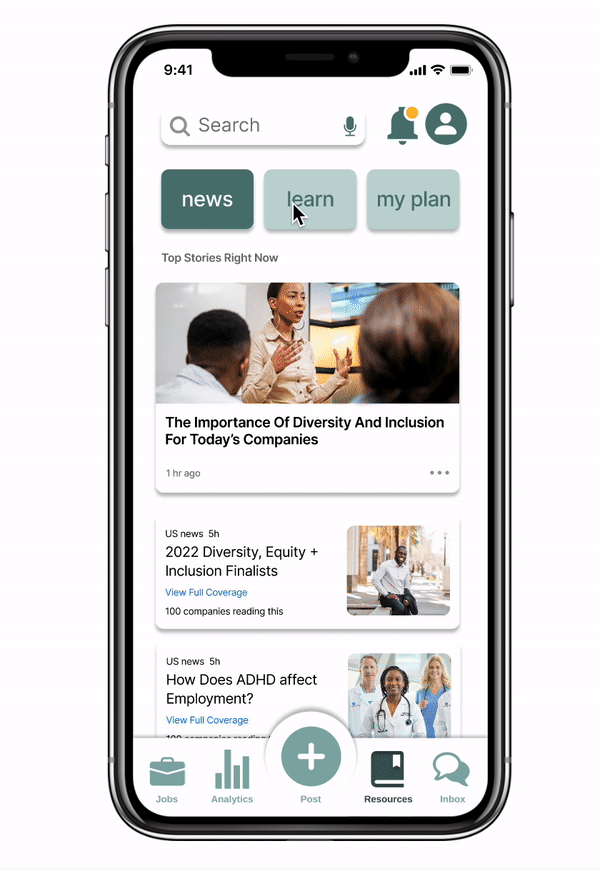INVISIBLE STRENGTHS
Creating an Inclusive
Hiring Experience

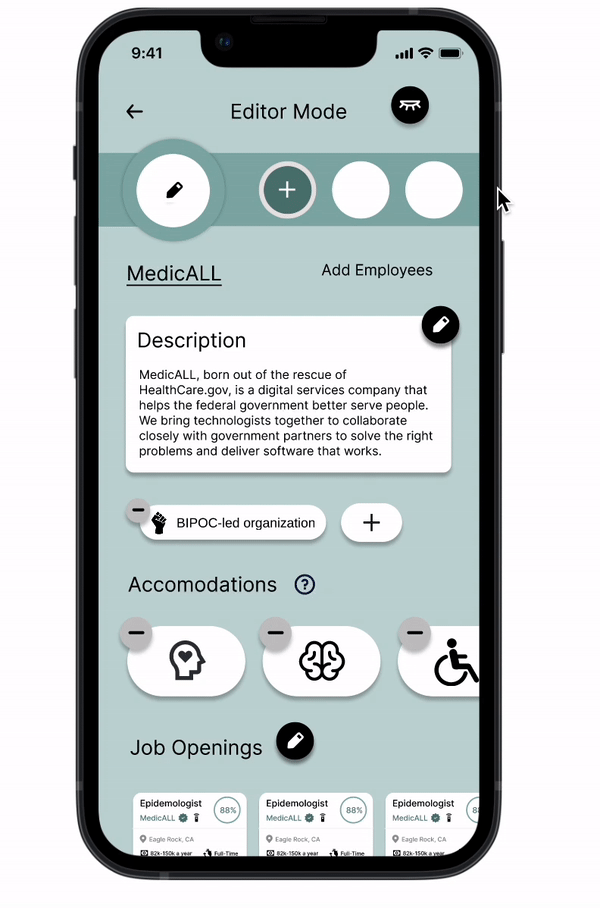



PUBLIC HEALTH MOBILE APP UX DESIGN 3 WEEKS
OVERVIEW
CHALLENGE
Invisible Strengths is “A social networking app connecting intersectional (BIPOC/LGBTQIA+ disabled) candidates in the public health field with inclusive work environments”. While the Invisible Strengths team had previously developed an interface for a job-seeker, they needed our help developing the interface for a job-poster.
Our goal was to conduct research into the pain points surrounding the current employer process flow and develop a clickable prototype to test with users that could be incorporated into Invisible Strength's existing prototype in Figma.
My team utilized the Five Stage Design System with a twist! We conducted all the UX research together but after the Define Stage, we decided to divide and conquer four user flows. Though we prototyped separately, we tested and iterated together.
The Problem
The Job Market is shifting. Job recruiters need a way to learn and incorporate DEAI principles in the recruitment process so that they can hire the right candidate.
The Solutions
Onboarding
Our user feels overwhelmed by the hiring process. The onboarding flow will inform our users on where to start.
Job Post
The Job Post Flow will give our users an intuitive job-post experience centered around managing and incorporating DEAI principles.
Company Profile
A company Profile Page gives our users the opportunity to build and showcase their values to potential candidates.
Education
Our users can't actualize principles they don't have a strong understanding about. Our team hypothesized that the key to resolving our problem involves an asynchronous Education flow where users can explore, learn, and plan their solutions with a community.
EMPATHIZE
Surveys + Interviews
15 survey responses | 4 user interviews
-
73% of survey respondents say DEAI is an important part of their company’s mission statement
-
53% of survey respondents say that they provide some form of DEAI accommodations in the workplace
-
Only 13% of survey respondents currently list the accommodations they provide to potential candidates as part of the job search process
With 73 percent of survey respondents saying DEAI is important but only 13 percent actually listing the accommodations they offer, we saw early on that there is a large disconnect between the importance of DEAI principles and how they are actually emphasized in the hiring process.
Affinity Map Insight
Through affinity mapping which is a process of compiling and grouping our interview data, we found some core patterns that helped shape our design goals for this project
DEFINE
User Persona
A user persona is a semi-fictional character based on a current (or ideal) customer. By talking to users and synthesizing demographic and psychographic data, we developed a Persona to help make our goals with product marketing more robust.

Hiring Hero - Jazz Jones
Jazz Jones is a recruiter for an established public health company. As part of the job recruiting process, they want to be able to showcase their company and manage job posts and potential candidates.
Jazz wants to prioritize diversity, equity, inclusion, and accessibility (DEAI) for the company they work at but they don't fully understand what those accommodations are or how incorporating DEAI into the recruiting process will benefit their company.
After synthesizing our research and developing a User Persona we found that our problem was slightly different than previously hypothesized. When it comes to making the hiring process more inclusive, our problem has less to do with the need to hire the perfect candidate and more to do with the cultural demand to redefine what the right candidate means. Our goal is to help our users in the recruitment process by first expanding the definition of a good match.
NEW! Problem Statement
The Job Market is shifting. The Hiring Hero needs a way to learn and incorporate DEAI principles in the recruitment process so that they can expand their applicant pool.
IDEATE
How Might We?
-
How might we highlight accommodations and benefits as part of the recruiting process?
-
How might we help companies expand their applicant pool?
-
How might we make the job hiring experience more personal?
-
How might we help educate users about DEAI principles?
User Flows
ONBOARDING: An Employer enters the Invisible Strengths App for the first time.

JOB POST: An Employer with an existing account creates and posts a Job

COMPANY PROFILE: An Employer with an existing account navigates to and makes an edit to their Company Profile

EDUCATION: An Employer with an existing account Navigates to the Educational Feature and Adds a Course to their Lesson Plan

PROTOTYPE
Greyscales

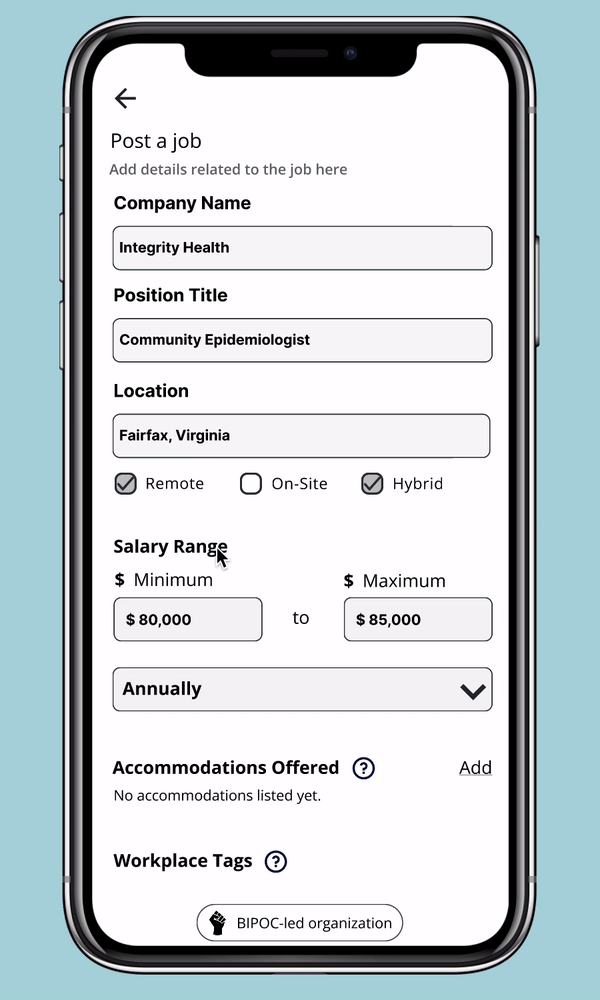
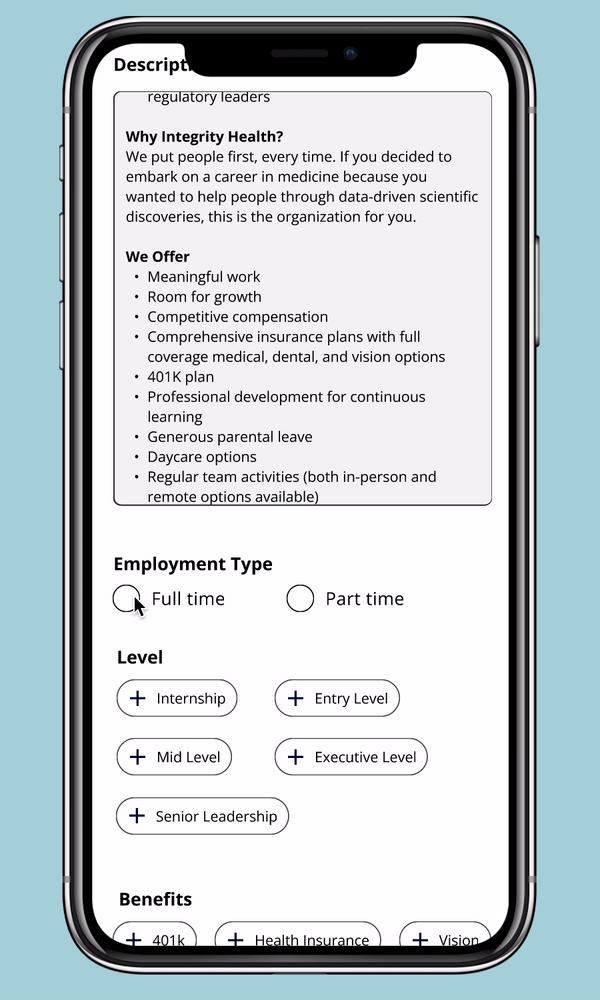
Onboarding +
Job Post Flow

Company Profile
Flow
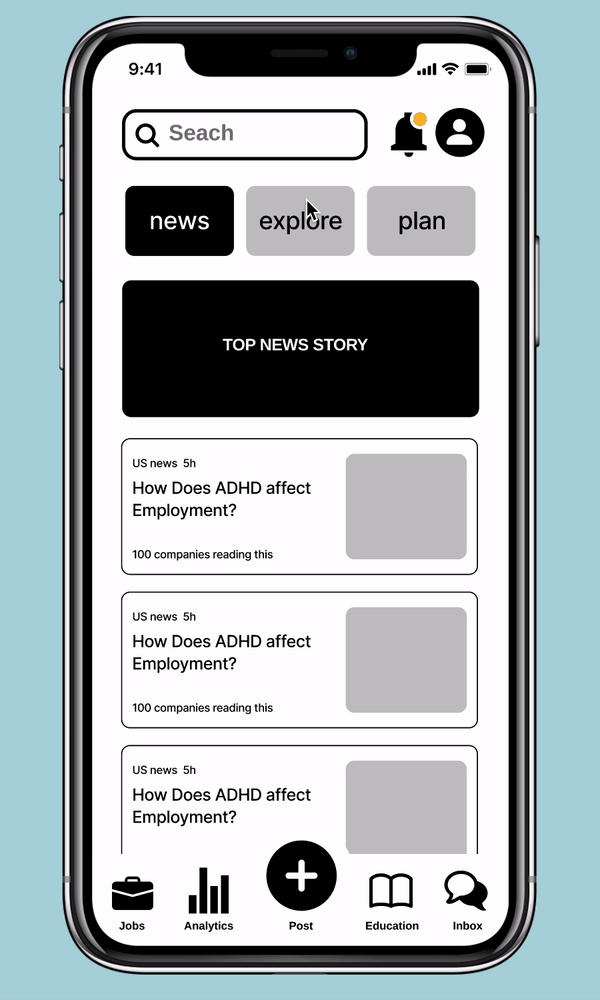
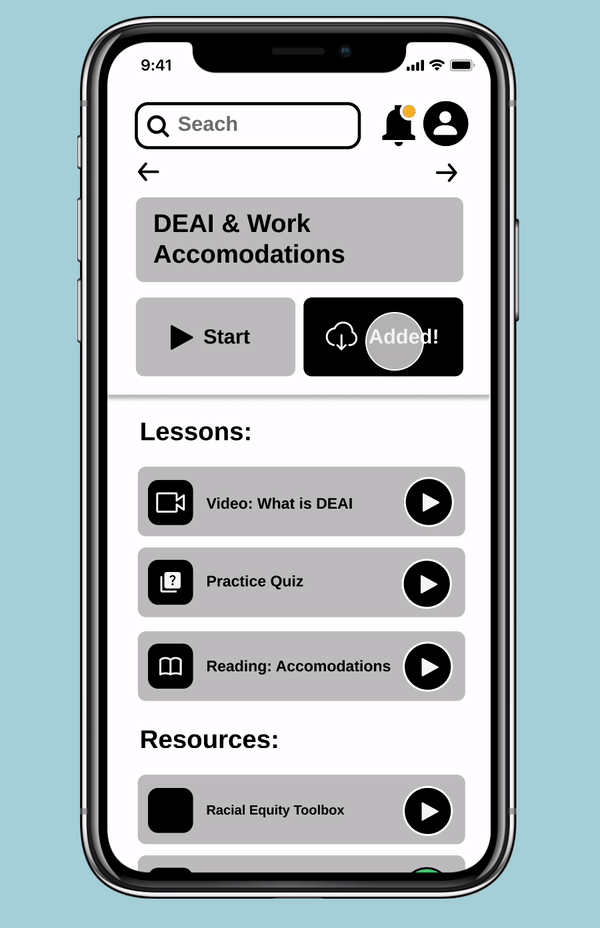
Education Flow
TEST
Usability Testing


NEXT STEPS
Where can we go from here?
Our team understood that in 3 weeks, we could only scratch the surface of our business and user needs. In terms of our user flows we felt that our client could continue to iterate on ways to make each feature more robust. For the onboarding flow, we recommended the use of A/B testing to find the optimal order information is presented to a user as well as the use of platforms like DUO to make the verification process more secure. In terms of Job Posting, we found that our users still felt overwhelmed by accommodations. Moving forward, it's important to ask how the Invisible Strengths App might further simplify the accommodations selection feature. The scope of the Education flow turned out to be much larger than we expected which opens the door to more research and usability testing as well as potential for a freemium vs paid educational feature.
WHAT I LEARNED
The Power of Prioritization
With 3 weeks to tackle a big project, my team and I had to understand the importance of scope and prioritization. While we found ourselves venturing into the elusive land of featuritis, clear communication with our client allowed us to take a step back and determine what we could actually execute in our given timeframe. While it is important to have many ideas, we learned that the reality of the UX process necessitates the ability to say no just as much as saying yes.

